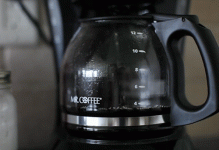Scott (Mich)
Sr. Member
That is a later 1st model 1873 winchester.......the cocking lever and the pin above the trigger indicates that it was made after 1876......probably 1879.
Thanks for the info.
That is a later 1st model 1873 winchester.......the cocking lever and the pin above the trigger indicates that it was made after 1876......probably 1879.
For general information the Springfield 45 70 was directly decended from the Springfield model 50 70, basically the same action with the exception of a smaller calibre It was succesfully tested out to over 1000 meters on hits on a mansized target.
The main trouble , which did not show up in the testing, was the brass used in the cartridge case was too soft, due to manufacturing processes and remained in the chamber after sustained fireing, due to black powder residue build up.. Continued attempts to clear the chamber merely resulted in the ejector pulling through the soft rim, resulting in the men useing whatever they had to try to pry the cartride case out of the chamber, in most cases their knives..
The design and workmanship of the 50 70 & 45 70 was well within the accepted standards, still is. The repeating rifles of the day were ingenious but by necesity of a much lower power.and subject to the same problem, but of less frequency.
In the end the Springfields were far better a choice for battle field conditions, as found in the recent Civil War, Than the weaker repeaing rifles.
The Spring fields were essentialy a long range firearm, if Custer had used them properly, the Indians could have been picked off beore they could even form into groups, but since they were a new arm aggressive stratigy had not been developed yet. The old cliche' " hold your fire men " still applied.
Incidenally the first cartridges were similar to a .22 rim fire, but actually center fired, this was corrected wth an external center fired primer assembly, indepent of the hardnes of the brass.rim fire.. The brass had to be drawn soft enough to enable the striker to fire the priiming charge. This was THE problem.

 Yer well enough to join me in a cuppa.
Yer well enough to join me in a cuppa.Joe, I assumedthat you made a typo ont he 44-55. The standard Springfileld load was '45' -55. 55 graims of black powder, where as the standard load was a 45-70 grains of black powder. The men were so ill prepared by being only alloted some 20 rnds a year, that they coud not become used to the recoil - or shoot accurately -- demanded a lesser recoiling load.Yer well enough to join me in a cuppa.






 Sad, but that is what happens when you do not leave a record, ( or a BOOK ), behind for family members or friends to enjoy the life you led, or pick up your journey where you had left off.
Sad, but that is what happens when you do not leave a record, ( or a BOOK ), behind for family members or friends to enjoy the life you led, or pick up your journey where you had left off. 

I was told that this is one of the types of guns used in the battle, although most likely this was not one of those actual guns. The part that holds the bullet is made of brass and if fired too often would expand and the shell would not come out - it would jam. I read stories of Custer's men throwing these guns at the Indians in frustration.
View attachment 278078
View attachment 278079
a couple of more pictures
View attachment 278080
View attachment 278081
Winchester .44–40-Caliber Four cartridge cases of .44–40-caliber (FS 9612, 9624, 9730, 9801) were found during the 2004 investigations. These brass cases are centerfire and were primed with the Winchester-Milbank or Boxer type primer (Figure 13c). There were approximately 23,000 guns of the Model 1873 Winchester lever action rifle shipped from the Winchester warehouse by the end of 1876, all were .44–40-caliber (Madis 1979:132, 214). The Model 1873 was a great improvement over the Henry and Model 1866 because it had been adapted to handle the stronger and more powerful center-fire cartridge which could be reloaded. This model was produced in three variations, rifle, carbine, and musket. The firing pin and extractor mark analysis identified these four cases as being fired in three different guns. FS 9612 from Reno–Benteen matched to case FS 9730 from Custer battlefield. These two cases also matched to FS 1749, a case found on Custer field in 1984 in the Calhoun area. The 2004 finds add three Model 1873 Winchesters to the previous number for a total of eleven guns (Scott et al. 1989). FS 9612 represents use of a weapon at Reno–Benteen and at Custer battlefield (FS 9730 and 1749). The previous investigations identified two other guns used at both Custer and Reno–Benteen battlefields. The 2004 data demonstrates additional movement between the various areas of engagement by at least three warriors armed with a Model 1873 Winchester.
The monument that had the secret compartment still stands along Highway 212 near Busby, Montana. It is said that the cache is located at a point overlooking Chief Two Moons gravesite. Will anyone ever figure out where it is?
They left the Reservation due to lack of food, so they could hunt buffalo. I doubt any rifles were buried by the Native Americans. Apparently the Travel Channel is filming there in May from what I hear about the battle.
